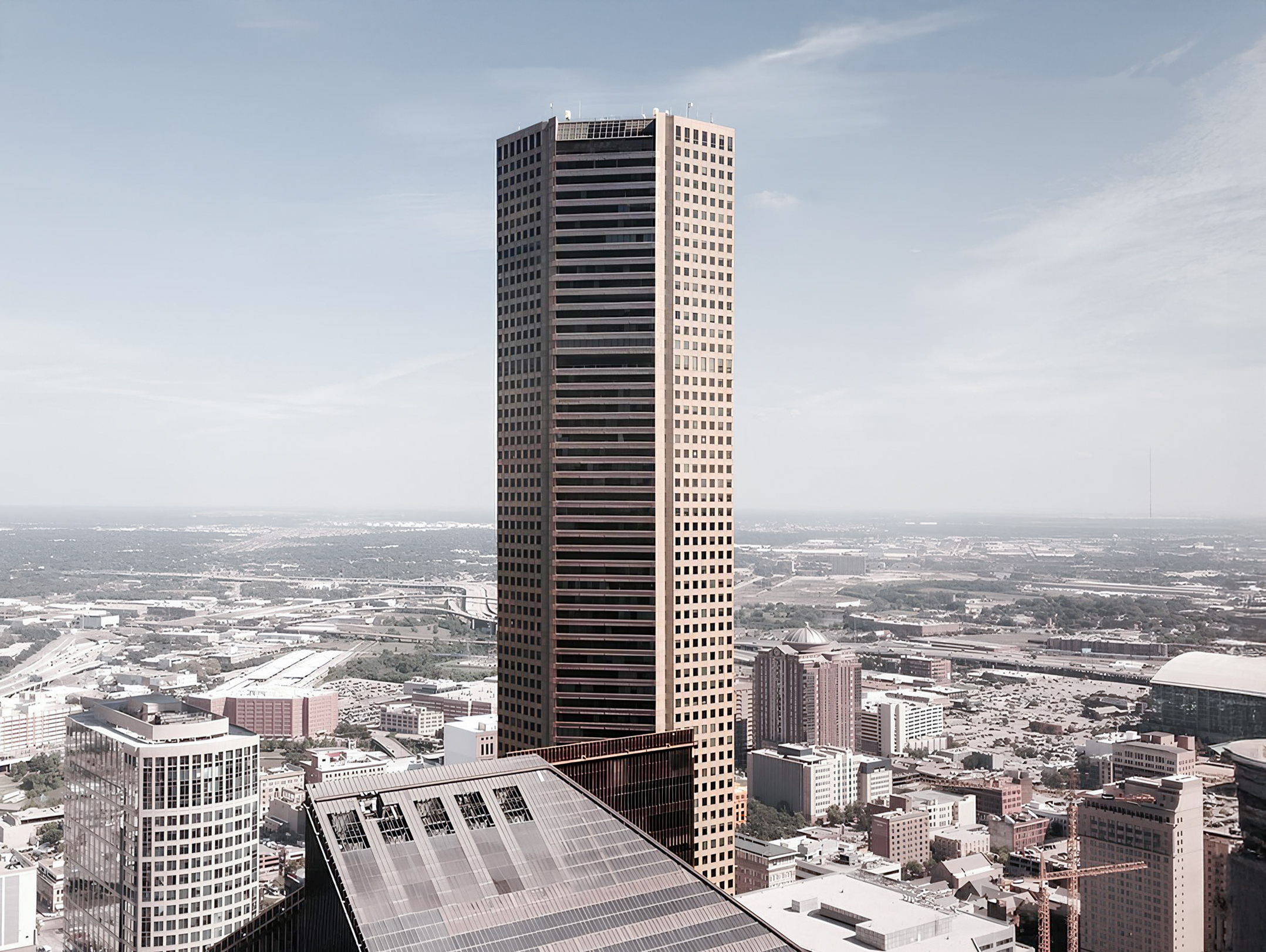The JPMorgan Chase Tower is a Modern Style skyscraper designed in 1977 by I. M. Pei & Partners, in association with 3D International, and built between 1978 and 1982 in Houston, TX.
JPMorgan Chase Tower is not the only name you might know this building by though. It is common for companies to want to attach their names to iconic buildings when they move in, or for the general public to come up with nicknames, and this one is no exception. The building has changed names several times over the years, and is also known as:
- Texas Commerce Tower between 1982 and 2000.
- JPMorgan Chase Tower between 2000 and 2006.
- 600 Travis between 2006 and 2021.
- JPMorgan Chase & Co. Tower from 2021 until this day.
Its precise street address is 600 Travis St., Houston, TX. You can also find it on the map here.
The JPMorgan Chase Tower has received multiple architecture awards for its architectural design since 1982. The following is a list of such prizes and awards:
- Museum of Architecture and Design American Architecture Award in 2023
- First Annual Award for Distinguished Architecture by the Reliance Development Company in 1981
- Grand Conceptor Award for Engineering Excellence by the ACEC in 1981
The building underwent a major restoration between 2020 and 2021. The architect commissioned to undertake this restoration was HOK Inc.

